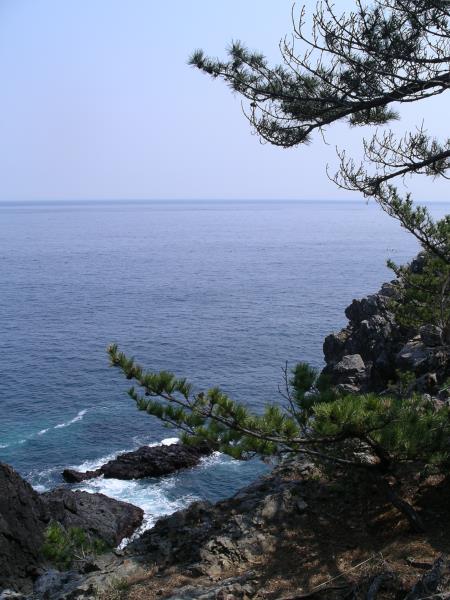
Somewhere across that expanse of water (seen from the Goishi Kaigan on the Iwate coast) lie the shores of California.


Do you remember the Pokemon craze from a few years ago? The Japanese sure do. In fact, it's still a craze here. It's even popular enough to be at the center of a joint advertising campaign between JR East and All Nippon Airways. From today until September 15, you can ride a bullet train decorated with your favorite characters. It all kicked off when one of the decorated trains (actually, a coupled set of two trains, an E3 and an E2) headed north from Tokyo, stopping at Kitakami on its way to Morioka.
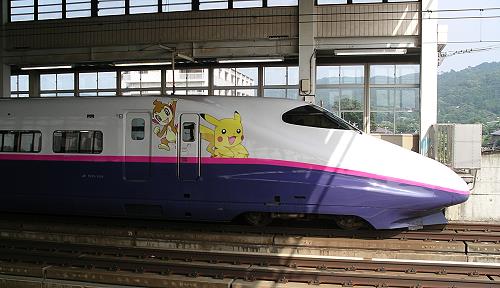
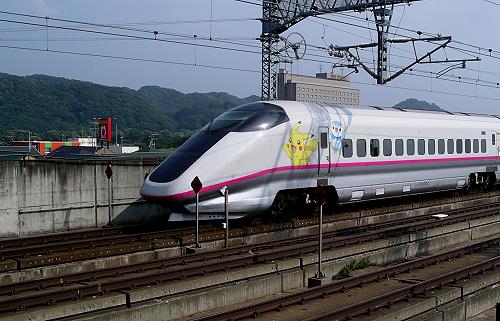


To remind motorists to watch for older people in the street, these signs appear in certain areas:
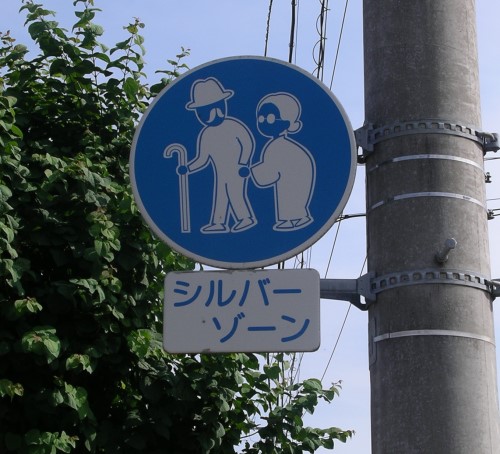
Those areas are called "Silver Zones." Aren't the signs cute?

Those areas are called "Silver Zones." Aren't the signs cute?
Well, what have we here? What are you looking at?
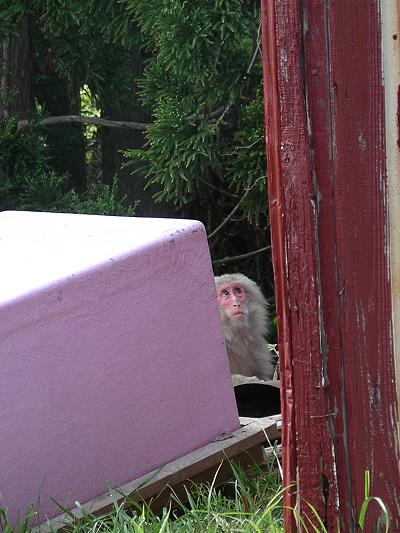
Oh, I see! You're looking at the fellow on the roof! And he's looking at us.
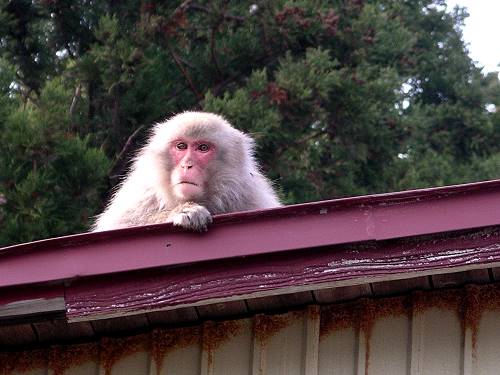
Back in May, we were driving along the Sea of Japan coast in Aomori Prefecture. We got quite a surprise when we rounded a curve and discovered a group of monkeys hanging around near the road. We stopped for some photos, and found them to be timid but curious.
Eventually, they lost interest in us and returned to munching on fruit while watching the sun set over the Sea of Japan.
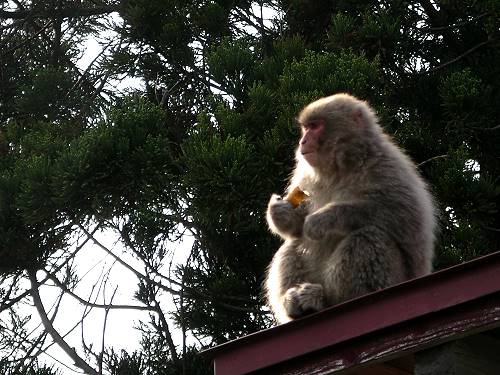

Oh, I see! You're looking at the fellow on the roof! And he's looking at us.

Back in May, we were driving along the Sea of Japan coast in Aomori Prefecture. We got quite a surprise when we rounded a curve and discovered a group of monkeys hanging around near the road. We stopped for some photos, and found them to be timid but curious.
Eventually, they lost interest in us and returned to munching on fruit while watching the sun set over the Sea of Japan.

I haven't been able to determine whether it's intentional or a longstanding typo, but I love that the hospital near JR Mizusawa Station appears to have a French name:
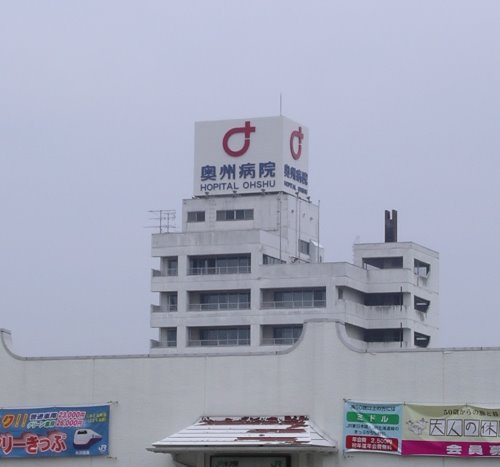
It wouldn't be too surprising for the name to actually be French. French has a larger influence on the Japanese language than I would have expected. For example, one of the words for "clown" in Japanese is a loanword from French ¡½ piero. Also, it seems that the more common translation of the word kuri is into French ¡½ marron ¡½ rather than into English ¡½ chestnut.

It wouldn't be too surprising for the name to actually be French. French has a larger influence on the Japanese language than I would have expected. For example, one of the words for "clown" in Japanese is a loanword from French ¡½ piero. Also, it seems that the more common translation of the word kuri is into French ¡½ marron ¡½ rather than into English ¡½ chestnut.
Yesterday, some places in Japan celebrated Tanabata, or "The Night of Sevens." Originally from China, the story of Tanabata is a sadly romantic one. It is said that a weaver of beautiful clothes (represented by the star Vega) fell in love with a herder (represented by the star Altair), causing them both to neglect their work. The king of the universe became angry with them, and separated them with the Milky Way, permitting them to meet only once a year on the seventh night of the seventh month.
To celebrate Tanabata, people write wishes on slips of paper and tie them to bamboo.
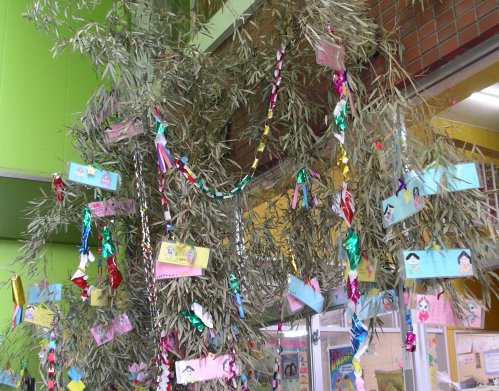
According to the Western calendar, the seventh day of the seventh month on the traditional Japanese calendar falls in August, which is when Sendai holds its famous festival. And, according to Wikipedia, this year Tanabata took on special meaning with the commencement of the G8 summit in Hokkaido and the Prime Minister's encouragement to the nation to celebrate by turning off lights and going outside to enjoy the Milky Way instead as a symbolic gesture for the environment.
To celebrate Tanabata, people write wishes on slips of paper and tie them to bamboo.

According to the Western calendar, the seventh day of the seventh month on the traditional Japanese calendar falls in August, which is when Sendai holds its famous festival. And, according to Wikipedia, this year Tanabata took on special meaning with the commencement of the G8 summit in Hokkaido and the Prime Minister's encouragement to the nation to celebrate by turning off lights and going outside to enjoy the Milky Way instead as a symbolic gesture for the environment.
Yesterday, we went to Battari-mura, where we observed villagers making tofu the all-natural, old-school way. Tofu-making has a lot in common with cheesemaking, what with all the boiling, pressing, straining, and coagulating of curds. It's hot work, but the end product is well worth it.
At Battari-mura, step one of the process involved grinding cooked soybeans with a hand-crank-operated stone mill, complete with straw-and-bucket drip system
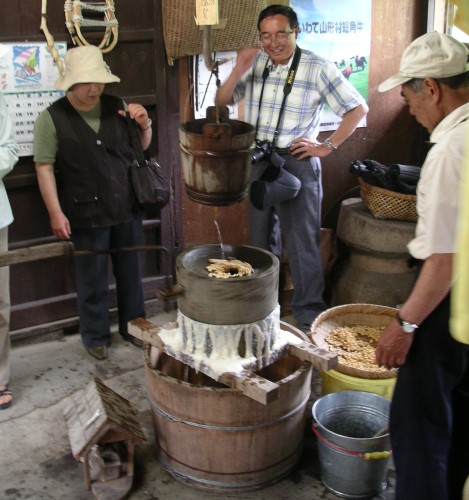
After the beans are ground, the resulting mash is boiled for a time, then scooped into a machine where it is pressed in a hand-crank-operated machine (what else?) to extract the soy milk.
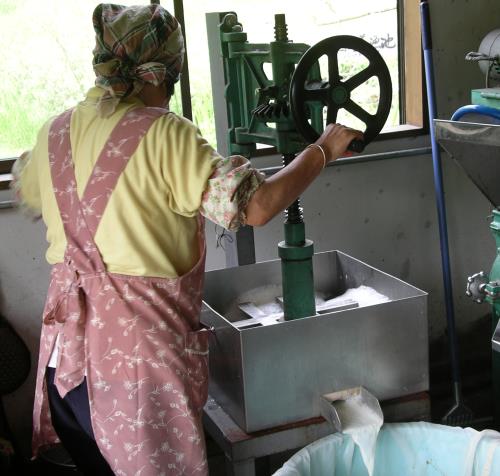
Salts or acids are added to the milk to cause the proteins to coagulate (or, as the maker said, "form a katamari"). It takes a little while for coagulation to occur, but once it does, it happens quickly.
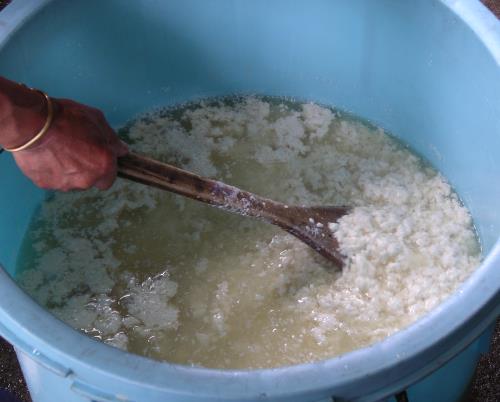
There's more processing involved to get blocks of tofu, but since we were there in part to eat tofu, the woman making it simply scooped the curds out of the bucket and drained them before serving them to us.
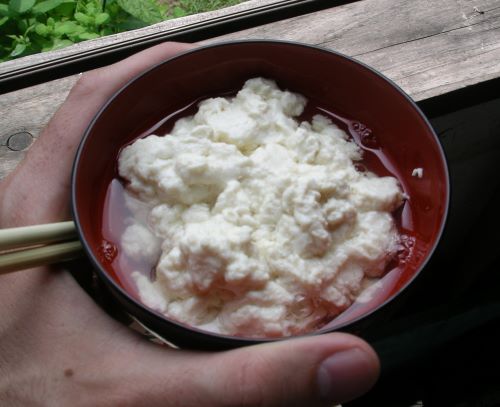
Mmm . . . fresh, delicious tofu.
At Battari-mura, step one of the process involved grinding cooked soybeans with a hand-crank-operated stone mill, complete with straw-and-bucket drip system

After the beans are ground, the resulting mash is boiled for a time, then scooped into a machine where it is pressed in a hand-crank-operated machine (what else?) to extract the soy milk.

Salts or acids are added to the milk to cause the proteins to coagulate (or, as the maker said, "form a katamari"). It takes a little while for coagulation to occur, but once it does, it happens quickly.

There's more processing involved to get blocks of tofu, but since we were there in part to eat tofu, the woman making it simply scooped the curds out of the bucket and drained them before serving them to us.

Mmm . . . fresh, delicious tofu.
On Tuesday, I was out shooting photos around town when I heard a shinkansen coming. They're neat, so I thought I'd take a picture for the blog, not at all expecting this:
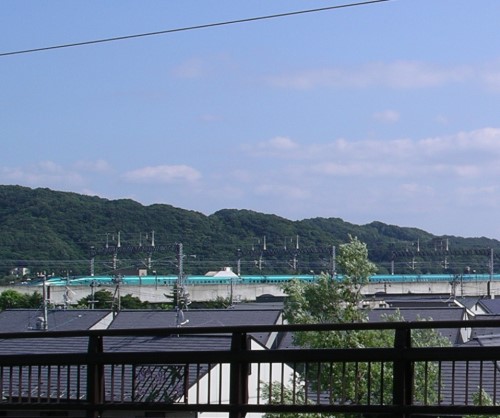
It's the Fastech 360, which JR is apparently still testing on the Tohoku Shinkansen line.

It's the Fastech 360, which JR is apparently still testing on the Tohoku Shinkansen line.
Back Next

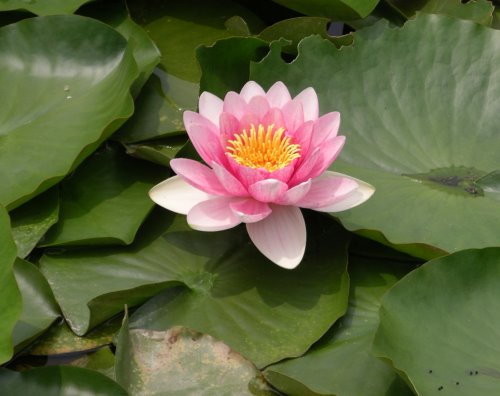
 Calendar
Calendar




